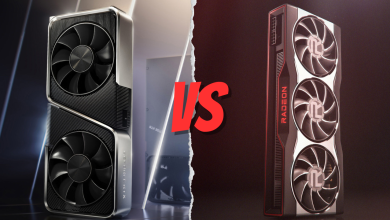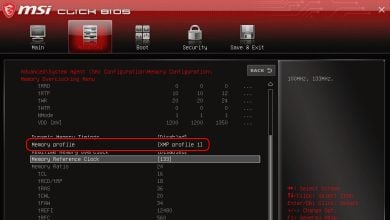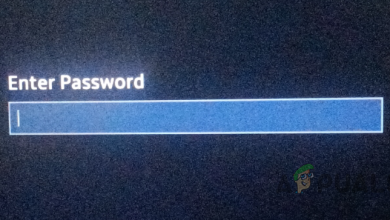How to Fine-Tune Your DDR4 RAM For A Ryzen CPU
AMD Ryzen users out there are investing in the microprocessors to get the most seamless speeds in computer performance. Beyond the out-of-the-box capabilities of the Ryzen series, few know that there are other factors contributing to their device’s performance and optimization as well. One popular such method among tech enthusiasts is processor overclocking which can take a 4.2 GHz Ryzen 3900X to its 4.6 GHz manufactured capability with some clock and voltage tweaks. This method is great as long as you’ve got a fast enough memory to support it. What many CPU overclockers miss out on is the fact that the potential of their beast processors can be crippled by the slow performance of their RAMs. It’s understandable, then, that fine-tuning your RAM is essential when it comes to any type of performance-boosting to allow for a fast and stable PC device.
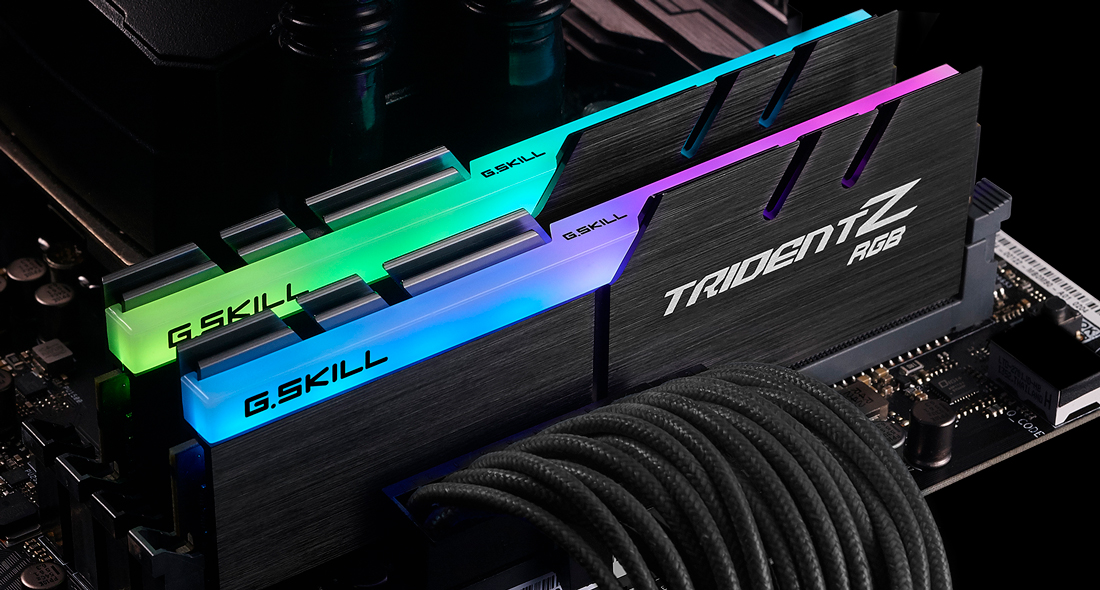
Going in, let’s understand some of the reasons why overclocking your memory module (your DDR4 RAM, in this case) is necessary, if not simply beneficial. Firstly, the DDR4 RAM, as with most memory modules, does not necessarily come with the speeds stated on the box. The default manufacturer settings are often lower and need to be tweaked through the clock rate and voltage supply if you want to go beyond the base settings. Secondly, if you’re someone who has already overclocked your CPU through the processor overclocking method and adjusted your base clock as well, you’ll need to go into your RAM settings and adjust the frequency values to ensure that it resonates well with the new processor base clock you set and provides for a more stable system. Thirdly, if you’re a gamer or someone who performs intense activities on the CPU (these could be simulations, virtual engines, or graphics-heavy gaming), overclocking your DDR4 RAM will unlock a world of potential because your processor and system capabilities are directly linked to your system’s memory speeds and utility.
Overclocking your DDR4 RAM won’t cost you a penny and won’t require investment into an additional cooler either. Moderate RAM overclocking will provide a substantial boost to your performance without overheating your system or requiring any supporting hardware or gadgets. With all these reasons laid out for you, what reason is there to not max out the performance of the memory module you’ve paid for?
Just as with the Ryzen processor overclocking, you can overclock your DDR4 RAM by adjusting your base clock, the clock multiplier, and the timing parameters. Changes in the clock may require changes in the voltage you supply your DDR4 RAM. You may have to adjust the voltage for the integrated memory controller inside your CPU (VTT), the reference voltage, and the northbridge voltage supplied to the integrated memory controller (VDDNB). Just adjusting the DRAM and IMC voltages to start off is enough to get your overclocking process going. Again, as with processor overclocking, these parameters need to be changed simultaneously, and keeping a pen and some paper on hand can be useful to jot down which changes worked and which ones didn’t.
Before we start, If you’re someone who is looking to buy a new set of memory for your Ryzen processor, then make sure to check out our favourite DDR4 modules for the Ryzen series CPUs.
Preparing & Gauging Presets

To make your adjustments, you’re going to have to perform your tweaking through either a manufacturer software already configured on your device or the motherboard firmware.
A few softwares to consider are CPU-Z for getting a glance at the system’s currently set values, Memtest86+ for performing extensive stress tests (the Intel Extreme Memory tool can be used for this as well), and the software you intend to use heavily on the device to perform the final stress test and gauge the effectiveness of your tweaks.
CPU-Z gives you a glance at your memory’s frequency, multiplier, latency (CL), RAS# to CAS# delay (tRCD), RAS# precharge (tRP), cycle time (tRAS), row refresh cycle time (tRFC), and command rate (CR). The manipulations will have to be made by accessing the motherboard directly but getting a sense of the base values through CPU-Z can be useful in gauging how far off from the advertised values your DDR4 RAM stands.
Overclocking
Before beginning, be warned that tweaking the voltage beyond recommended levels can fry your DDR4 RAM, so make your tweaks in small increments and ensure that the system is stable before proceeding to every next step.
To overclock your DDR4 RAM, first get a mental snapshot of the currently set values of your DDR4 RAM through the CPU-Z software. Next, use a stress testing software like the ones listed above to gauge your system’s stability. Once you’ve done this, create a mental (or written) note of which parameters your system was already set at. These are important to know in case you need to revert back from a poorly calibrated memory module.
Next, using the motherboard firmware or the manufacturer supplied software, set your memory multiplier to the maximum value. You can go into your system’s BIOS and find the page that allows you to tune your system overclocking values. This page is titled differently on different systems. In your overclocking tuner page, there will be options to auto overclock, perform XMP calibration, or manually overclock the DDR4 RAM. You can try out the auto feature first just to see how the performance trades up. If your system is stable and you want to go further, apply the extreme memory profile (XMP). This usually trades it up to the advertised values. Let the system boot and then perform a stress test. If the system is stable once again, you are then ready to go into the manual adjustments. Note your system values according to as shown in CPU-Z after applying XMP. Keep these in mind as you go into the manual adjustments to know what to revert back to in case anything goes wrong.
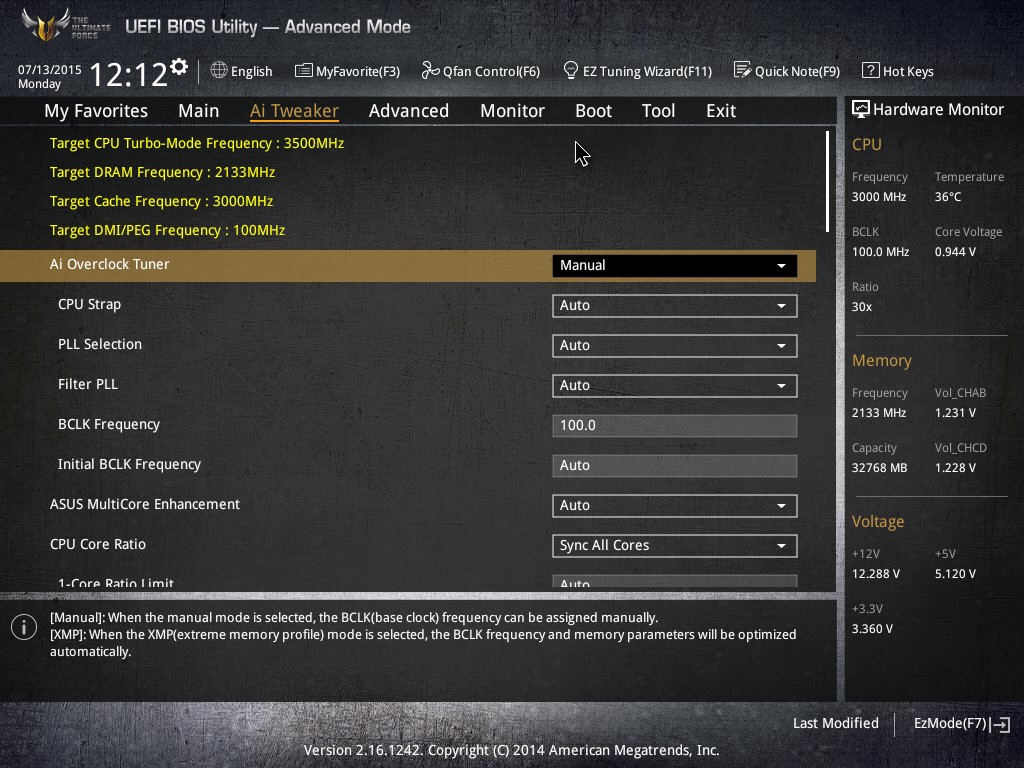
Set the memory multiplier to the maximum value that the BIOS setup allows you to use. Use Memtest86+, Super Pi 32M, or the Intel Extreme Memory tool to perform a stress test and ensure that the system is stable. Once it is, start increasing your base clock frequency in small increments such as 10 or 20 Hz. After each increment, perform a stress test to ensure your system’s stability. Note that if you’ve already performed processor overclocking and have adjusted your base clock in that procedure, then don’t adjust it again in the memory overclocking. If you face an issue instability, then try decreasing the base clock slightly, decreasing the memory multiplier you initially maxed out, or increasing the CPU multiplier (if you haven’t already optimized your processor) to get the system into a more stable state.
The VTT voltage will need to be tweaked as the memory base clock is tweaked as well. You can try tweaking the DRAM voltage in small 0.01V increments as well to see if this impacts your memory module’s performance. Remember to perform a stress test after every single value manipulation or tweak.
Next, try to increase the primary memory timings to see if an increased base clock or multiplier can benefit the memory speeds and still run in stable condition. You can increase your latencies in this part as well. Usually, however, the primary memory timings need to be reduced to improve your DDR4 RAM’s performance but in some cases, based on the processor you’re running and if or how you’ve overclocked it, increasing these values may provide better results so it’s always recommended to try increasing them first before tightening them.
Since the DDR4 RAM does not have a RAM frequency ceiling, once you’ve reached the maximum DRAM safe voltage or the maximum base clock, this may be the point to stop. Be wary of thermal or overvoltage damage to your memory module which may stop your system from booting (at this point due to powering off, you cannot check which voltage was applied to your module that may have caused physical damage). Caution is advised heavily with overclocking the DDR4 RAM. Thus, be sure to take all your adjustments in small increments and to perform thorough stress tests afterwards to ensure that the system is fully stable before moving on.
Final Thoughts
Memory overclocking can help you unlock the potential of your CPU’s performance even after overclocking the processor. Beyond that, knowing that your DDR4 RAM does not operate at the advertised speeds, overclocking it may be something you want to consider to get your money’s worth out of the memory module you’ve paid for. Know that overclocking is risky business so the importance of baby steps in adjustments and repeated stress tests cannot be emphasized enough. Keep in mind that although we said that RAM overclocking does not require an active cooler, if you push your DDR4 RAM far beyond the general overclocking boosts, you may need to install one, as heavy overclocking can heat up your memory module significantly. That will be necessary IF you go wild on the overclocking, that is, but that’s not the general case.
